I am a postgraduate student studying at City University of HongKong now, I got my Bachelor’s degree at College of Computer Science and Software Engineering, Hohai University.
My major is Computer Science and Technology. I primarily worked on medical image processing. I participated in several projects and tasks at the ChangZhou Key Laboratory of Digital Technology on Graphics and Orthopaedic implants(常州市图形图像与骨科植入物数字化技术重点实验室) and SuZhou Institute of Biomedical Engineering and Technology Chinese Academy of Sciences(中国科学院苏州生物医学工程技术研究所). My work involved 3D/2D registration, object detection, and image segmentation.

🔥 News
- 2025.07: 🎉🎉 One paper was accepted by BMC Medical Image(SCI, JCR-Q1).
- 2025.05: 🎉🎉 One paper was accepted by MICCAI25(CCF-B, SCI).(Early accept, Oral, acceptance rate: 9%)
- 2024.10: 🎉🎉 One paper was accepted by BIBM24(CCF-B) as short paper.(Acceptance rate: 21%)
📝 Projects
- 2025.05 (MICCAI25 Oral) RadGS-Reg: Registering Spine CT with Biplanar X-rays via Joint 3D Radiative Gaussians Reconstruction and 3D/3D Registration
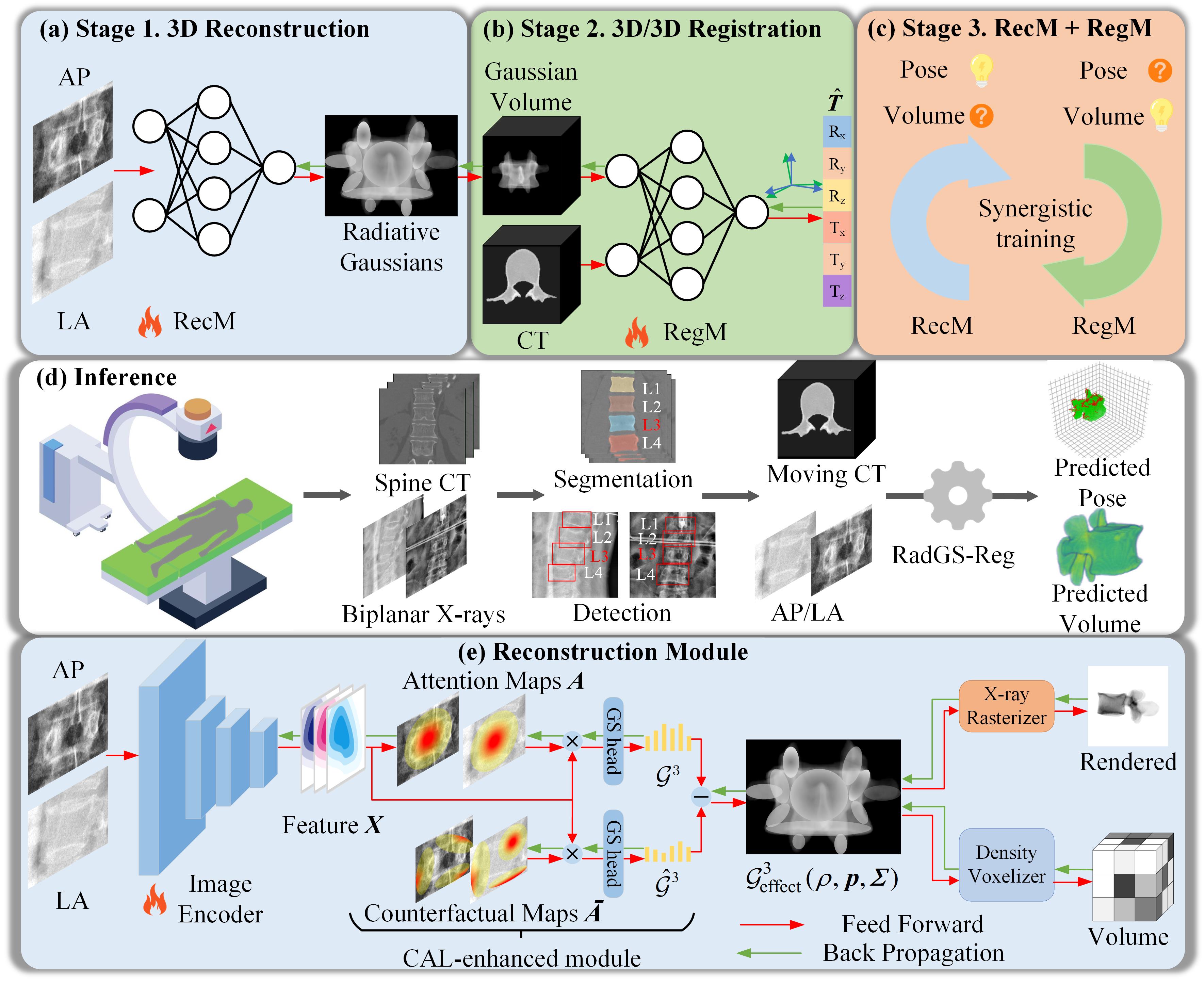


Computed Tomography (CT)/X-ray registration in image-guided navigation remains challenging because of its stringent requirements for high accuracy and real-time performance. Traditional “render and compare” methods, relying on iterative projection and comparison, suffer from spatial information loss and domain gap. 3D reconstruction from biplanar X-rays supplements spatial and shape information for 2D/3D registration, but current methods are limited by dense-view requirements and struggles with noisy X-rays. To address these limitations, we introduce RadGS-Reg, a novel framework for vertebral-level CT/X-ray registration through joint 3D Radiative Gaussians (RadGS) reconstruction and 3D/3D registration. Specifically, our biplanar X-rays vertebral RadGS reconstruction module explores learning-based RadGS reconstruction method with a Counterfactual Attention Learning (CAL) mechanism, focusing on vertebral regions in noisy X-rays. Additionally, a patient-specific pre-training strategy progressively adapts the RadGS-Reg from simulated to real data while simultaneously learning vertebral shape prior knowledge. Experiments on in-house datasets demonstrate the state-of-the-art performance for both tasks, surpassing existing methods.
- 2024.08 (本科毕业论文) Dual-Energy CT Tumour-infiltrating Lymphocyte (TIL) Prediction in Breast Cancer / 基于双能CT的深度影像组学预测乳腺癌肿瘤浸润淋巴细胞(TIL)水平研究
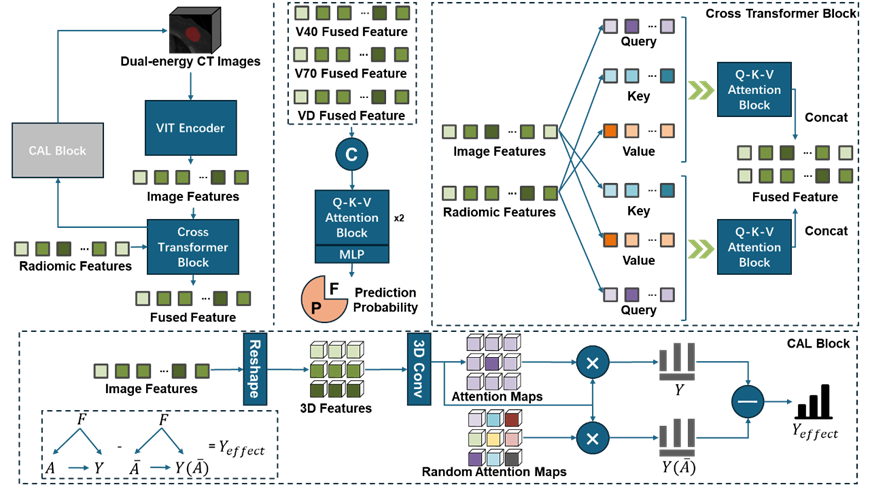

Tumour-infiltrating lmphocytes (TILs), as a new prognostic biomarker, are of important clinical value and have an association with improved survival rates and higher response rates to neoadjuvant therapy and immunotherapy in breast cancer. We hope to build a new network that fuses omics/clinical/imaging features to achieve better results. Specifically, we hope to build a multimodal fusion pipeline framework based on CrossTransformer and KNN omics feature screening.
- 2024.07 (BMC Medical Imaging) Establishment of AI-assisted diagnosis of the infraorbital posterior ethmoid cells based on deep learning

The ethmoidal chamber of the posterior frontal sinus is a possible structure in the frontal sinus, located in the last part of the frontal sinus, and is highly associated with the risk of chronic sinusitis. Wehopetodetermine whether the patient has this structure through the segmentation of CT sections, so as to achieve the purpose of assisting doctors in diagnosis. This work is in cooperation with the Department of Otolaryngology of Nanjing Tongren Hospital.
- 2024.07 Fraud APP intelligent identification and analysis system

We developed a comprehensive system for analyzing fraudulent applications, utilizing the Vue+SpringBoot architecture. My primary focus was on APK analysis, where I implemented dynamic analysis using emulator tools and MITMProxy. Additionally, I employed JADX and Selenium to facilitate APK download and static parsing. Moreover, I actively contributed to the design of the system architecture, as well as its overall integration and coordination.
- 2024.04 Field-Road Classification Based on Pixel Mapping
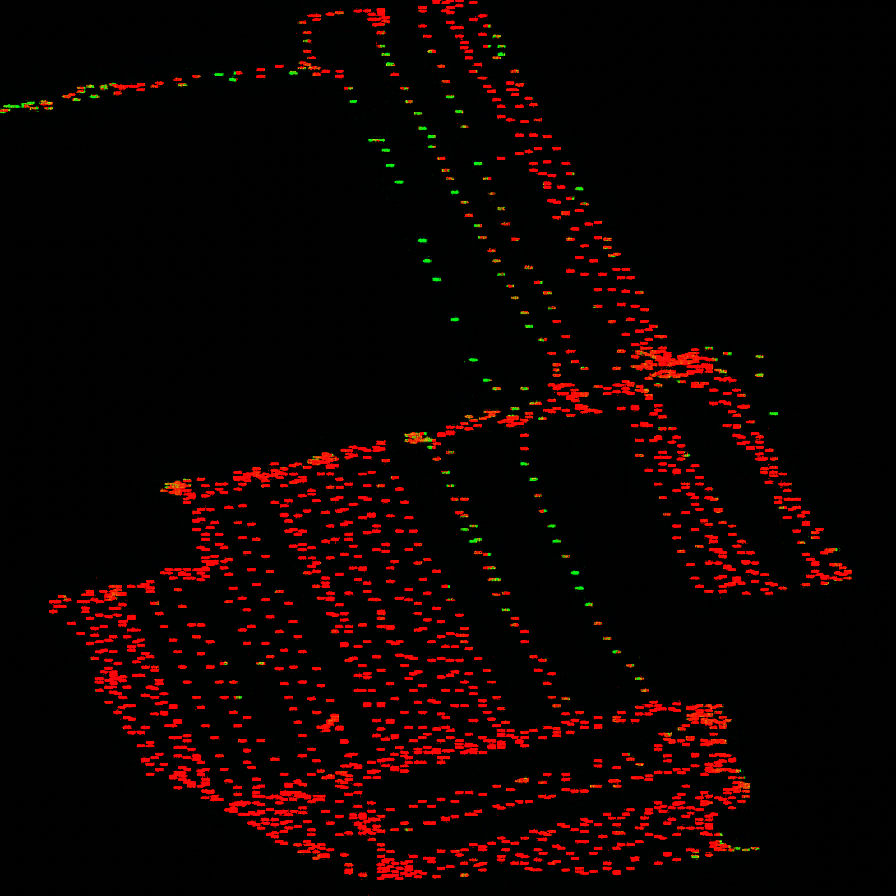
We proposed a precision farmland road segmentation algorithm based on Swin-Unet, aiming to achieve accurate classification of field roads and support real-time visualization with satellite maps. Through steps such as data filtering, image mapping, and Swin-Unet pixel-level classification, this method effectively integrates detailed statistical features of each GNSS point with visual features, thereby improving the accuracy and reliability of traditional farmland road segmentation methods that rely solely on visual information. Experimental results demonstrate that this algorithm achieves promising results in segmentation tasks.
- 2024.04 CT Lumbar Spine Segmentation with nnU-Net


We developed a CT lumbar spine segmentation approach using nnU-Net, focusing on a level of detail not found in current datasets. By annotating nine datasets to differentiate each part within the vertebrae—unlike existing datasets that segment the vertebral body as a whole—my work supports more accurate surgical planning for procedures such as pedicle screw fixation, leading to safer and more precise interventions.
- 2024.03(BIBM24) ABLSpineLevelCheck: Localization of Vertebral Levels on Fluoroscopy via Semi-supervised Abductive Learning

Deep learning has demonstrated promising efficacy in the localization of vertebrae within X-ray imagery, although it is recognized for its deficiencies in compositional generalization, data efficiency, and interpretability. To address this issue, we introduce an abductive learning mechanism, situated within the neuro-symbolic paradigm, tailored for semi-supervised vertebral localization. Initially, unannotated spinal fluoroscopic images are processed by the networks to infer pseudo-labels for vertebra localization. Subsequently, these pseudo-labels undergo abductive reasoning via a knowledge base comprised of first-order logical clauses. The networks are then retrained utilizing the abducted outcomes. Additionally, we propose an ensemble technique that amalgamates semantic detection of vertebral levels with instance detection. To further augment performance, we have synthesized a dataset and annotated the BUU dataset for network pretraining. Ablation studies validate the efficacy of the proposed components in our methodology. Furthermore, comparative analyses reveal that our approach significantly surpasses leading object detection algorithms, exhibiting superior performance with minimal annotations.
- 2023.12 Tibial Midline Recognition Technology Based on U-Net

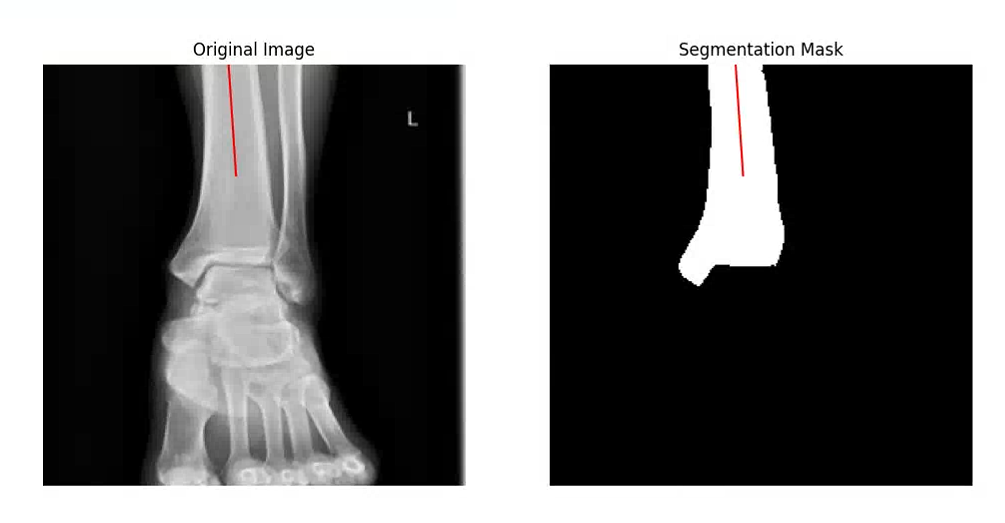
We employed the SAM model for simple annotation of the existing dataset and utilized U-Net for training and prediction. To obtain the tibial midline, we connected the midpoint at the top of the mask with the midpoint of the middle segment. The actual algorithm demonstrated good robustness and recognition performance on the dataset.
- 2023.09 Intraoperative X-Ray Image Vertebrae Symbolic Reasoning Recognition


Our method combines visual object detection with first-order logic predicate reasoning, effectively improving the recognition rate of vertebral bodies through logical reasoning. The results obtained are more interpretable compared to those from object detection alone. The logic part can be divided into two sections: facts and inferences. The facts are directly derived from object detection, while inferences are automatically generated by a reasoning engine constructed in the Prolog language. The facts we construct come from the results of object detection, and the conclusions are derived directly from these facts.
- 2023.06 Intelligent Recognition and Retrieval System for Medical Documents

The system is based on the Spring Boot and Vue frameworks, incorporating numerous technologies such as WebSocket, Redis caching, RabbitMQ message queuing, and Elasticsearch distributed searching. The purpose is to facilitate document verification, retrieval, automatic archiving, and functions such as Optical Character Recognition (OCR) from images, text classification (BERT), and translation (openNMT). I am primarily responsible for the construction of the front-end and back-end, as well as the deployment of the entire project.
- 2023.03 Intelligent River Digital Twin Practice Based on WISE-PaaS Cloud
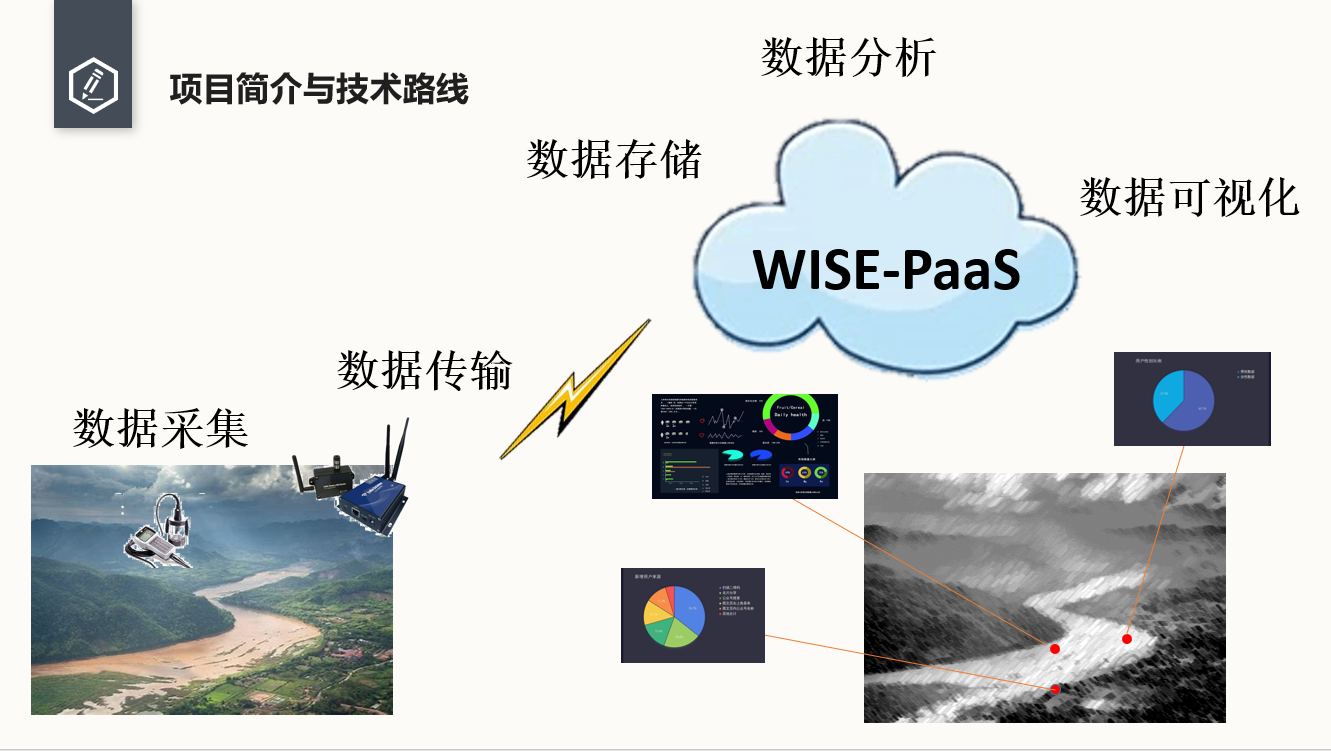
The project is based on the Advantech WISE-PaaS Industrial IoT Cloud platform and focuses on the study of digital twins for intelligent rivers. It aims to monitor and assess target rivers in real-time, ultimately establishing a platform for real-time monitoring and assessment of intelligent rivers.
🎖 Honors and Awards
- 2024.08 13th China Software Cup, 3rd Prize.
- 2024.05 15th LanQiao Cup Jiangsu Province Competition Region, 1st Prize.
- 2023.09 2022-2023 Hohai University Scholarship for Academic Progress.
- 2023.07 The 14th China College Student Service Outsourcing Innovation and Entrepreneurship Competition(中国大学生服务外包创新创业大赛), 3rd Prize.
- 2023.05 The 2023 ICPC Jiangsu Provincial Programming Contest, Bronze Prize.
- 2022.09 2021-2022 Hohai University Scholarship for Academic Progress.
- 2022.05 The 22th Hohai University Algorithm Design Creativity Show, 1st Prize.
- 2021.12 The 10th Hohai University Programming Contest, 1st Prize.
📖 Educations
- 2025.09 - now, Department of Computer Science, City University of HongKong.
- 2021.09 - 2025.06, College of Computer Science and Software Engineering, Hohai University.
- 2018.09 - 2021.06, Guangdong Overseas Chinese High School, GuangZhou.
- 2015.09 - 2018.06, Guangzhou No.2 Middle School(Main campus), Guangzhou.
💻 Internships
- 2024.06 - 2025.04, Visiting Student, SuZhou Institute of Biomedical Engineering and Technology Chinese Academy of Sciences(中国科学院苏州生物医学工程技术研究所), China.
